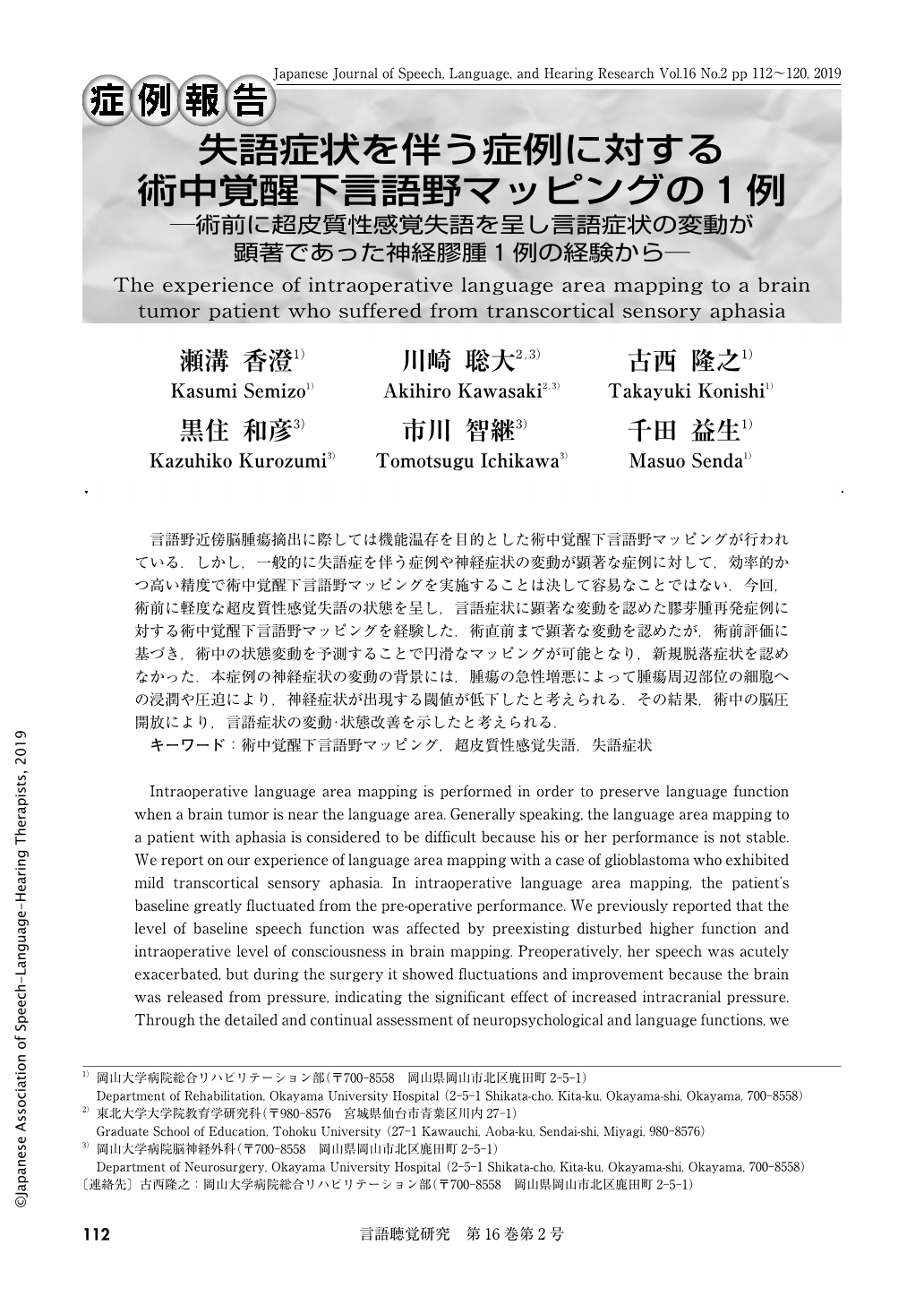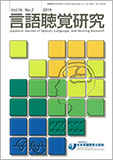Japanese
English
- 有料閲覧
- Abstract 文献概要
- 1ページ目 Look Inside
- 参考文献 Reference
言語野近傍脳腫瘍摘出に際しては機能温存を目的とした術中覚醒下言語野マッピングが行われている.しかし,一般的に失語症を伴う症例や神経症状の変動が顕著な症例に対して,効率的かつ高い精度で術中覚醒下言語野マッピングを実施することは決して容易なことではない.今回,術前に軽度な超皮質性感覚失語の状態を呈し,言語症状に顕著な変動を認めた膠芽腫再発症例に対する術中覚醒下言語野マッピングを経験した.術直前まで顕著な変動を認めたが,術前評価に基づき,術中の状態変動を予測することで円滑なマッピングが可能となり,新規脱落症状を認めなかった.本症例の神経症状の変動の背景には,腫瘍の急性増悪によって腫瘍周辺部位の細胞への浸潤や圧迫により,神経症状が出現する閾値が低下したと考えられる.その結果,術中の脳圧開放により,言語症状の変動・状態改善を示したと考えられる.
Intraoperative language area mapping is performed in order to preserve language function when a brain tumor is near the language area. Generally speaking, the language area mapping to a patient with aphasia is considered to be difficult because his or her performance is not stable. We report on our experience of language area mapping with a case of glioblastoma who exhibited mild transcortical sensory aphasia. In intraoperative language area mapping, the patient's baseline greatly fluctuated from the pre-operative performance. We previously reported that the level of baseline speech function was affected by preexisting disturbed higher function and intraoperative level of consciousness in brain mapping. Preoperatively, her speech was acutely exacerbated, but during the surgery it showed fluctuations and improvement because the brain was released from pressure, indicating the significant effect of increased intracranial pressure. Through the detailed and continual assessment of neuropsychological and language functions, we were able to deal with the variability of the baseline performance during the surgery and successfully complete the surgery without causing any new neurological deficits.

Copyright © 2019, Japanese Association of Speech-Language-Hearing Therapists. All rights reserved.


